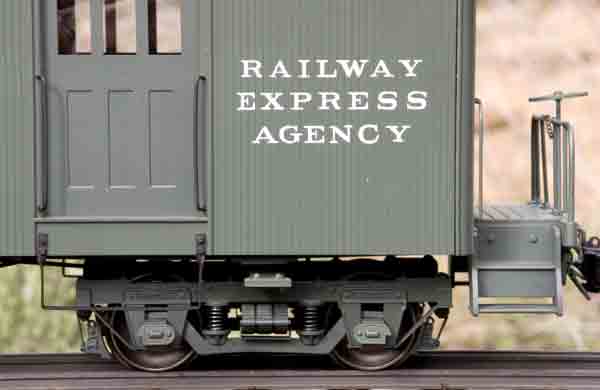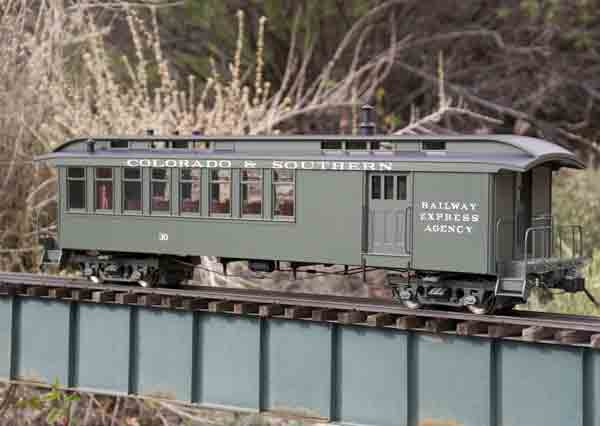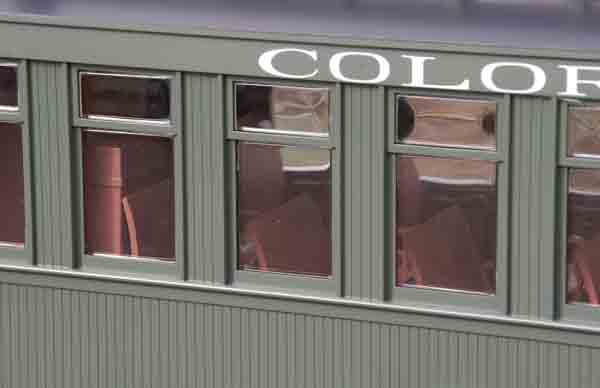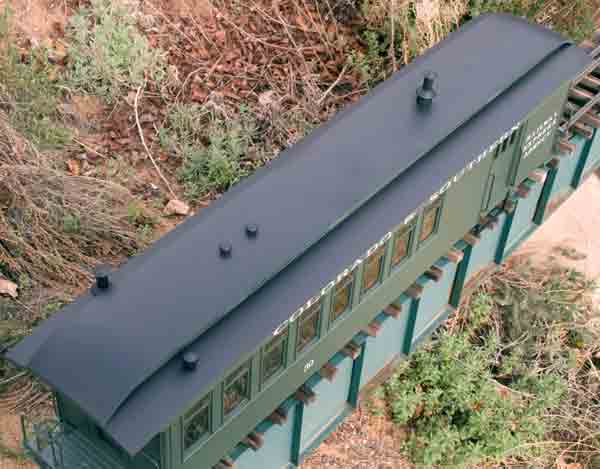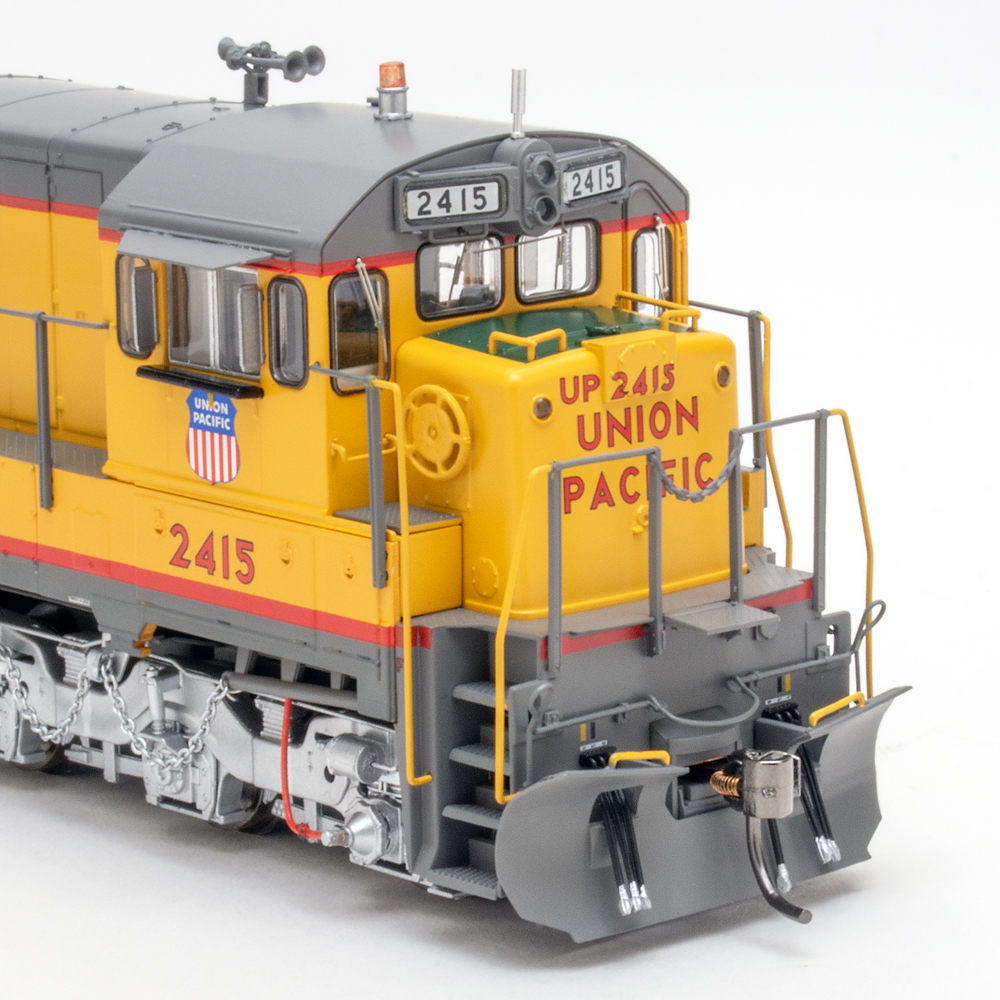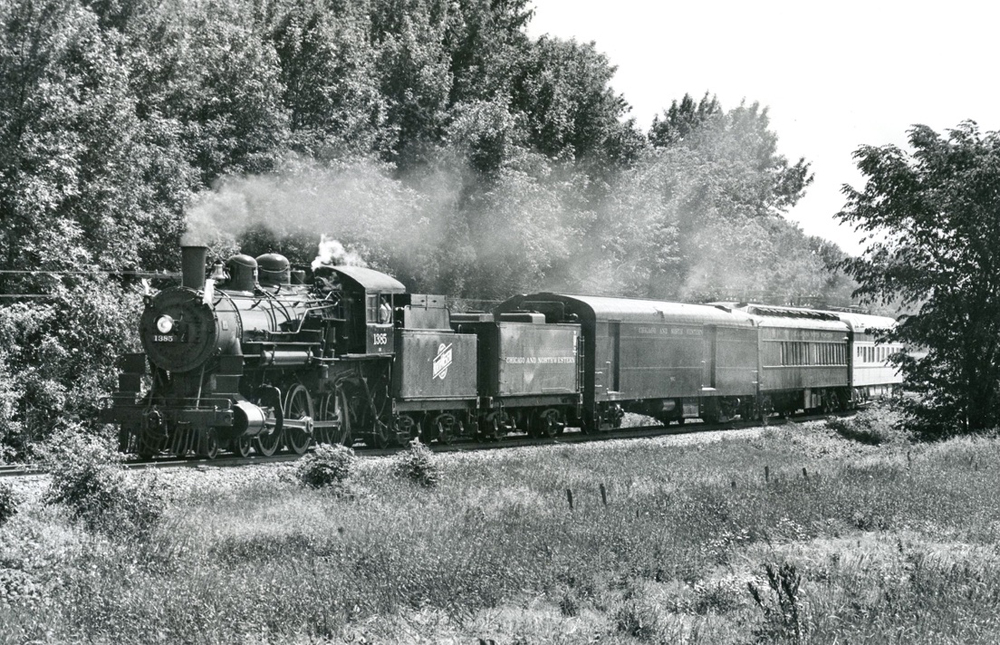AMS Trains
33268 Central Ave.
Union City CA 94587
Check with your local dealer for price and availability
Website: www.amstrains.com
1:20.3-scale combine (combination baggage car and coach); plastic body and interior detail; all-metal trucks; lighted interior; sliding side doors; opening, spring-loaded end doors; working knuckle couplers; basic underbody detail. Dimensions: length over end beams, 25½”; width, 5″; height, 6¾”. In 1:20.3 scale, this works out to 43’1½” x 8’5½” x 11’5″, respectively
Pros: Crisp, opaque lettering; excellent paint; high level of detail, metal trucks; good fidelity to prototype; good looking model
Cons: Heavy model (6 pounds 8 ounces); wheel wipers cause drag; inadequate interior illumination; rudimentary underbody detail
The prototype was made by Jackson & Sharp for the D&RGW. Our review sample is lettered for the Colorado & Southern. The lettering is not vertically centered in the letter board and nearly touches the bottom edge. The combine is also available lettered for the Rio Grande and the Rio Grande Southern, as well as unlettered. Car details do not change with the different road names so the car may or may not be absolutely accurate for your chosen road.
The car has a high level of detail, at least above the floor line, and the all-metal trucks are also well detailed. The trucks are fitted with metal wipers that contact the backs of the wheels. These are to provide power to the car’s lights but they also create a fair amount of drag on the wheels. This, coupled with the car’s weight of over six pounds, makes it a heavy load for a locomotive. The interior lighting is accomplished with three tiny bulbs. These do not adequately light the car, so I would have preferred to see the whole lighting system dispensed with in favor of a more free-rolling vehicle. That said, it would be an easy job to remove the wipers to free up the wheels.
The car comes with sliding baggage doors and opening, spring-loaded end doors. Windows are molded in clear plastic. End rails and all hand rails are metal and are nicely proportioned. The interior is molded in a subdued orange plastic. The more fastidious modeler may wish to remove the seats and touch them up in more appropriate colors. The underbody features some basic detail but it is not up to the level of the rest of the car. However, until the car rolls over in a ditch, this disparity can’t really be seen.
Couplers are working plastic knuckles. These can be actuated from the sides of the car by some rather odd lifting levers. These levers, instead of lifting the coupler pins from the top in the usual manner, bear on the bottom of the pins, pushing them up until the couplers release. While not prototypical, the system seems to work okay.
The black roof is very smooth. Again, modelers may want to help it out cosmetically, applying tar paper or what have you. Smokejacks and vents adorn the roof.
Overall, this piece of rolling stock is beautiful. It really captures the Colorado narrow-gauge look. It could form a train all by itself or, with one or more of the companion coaches, would be part of an impressive consist.





